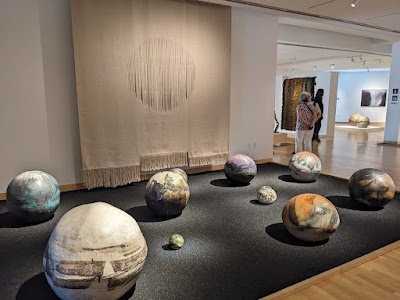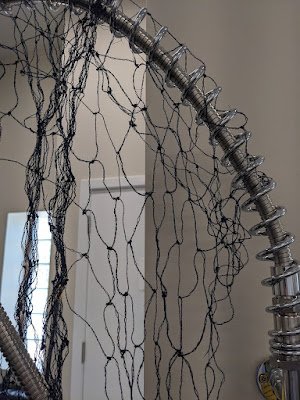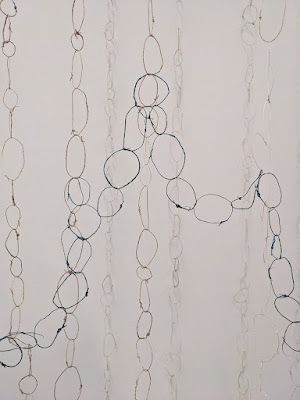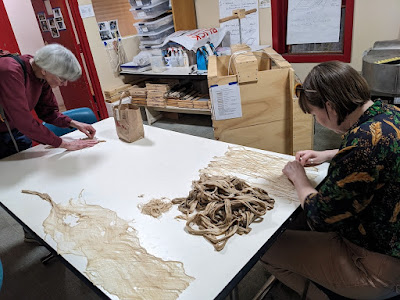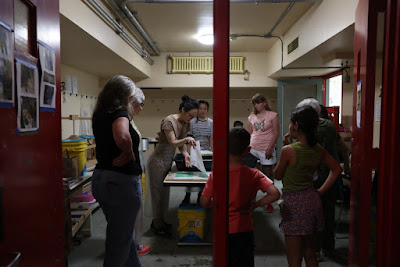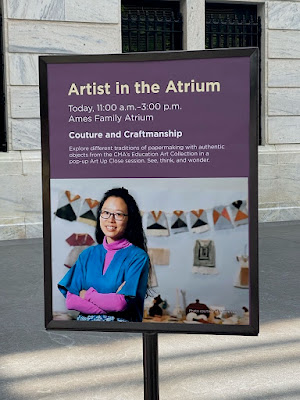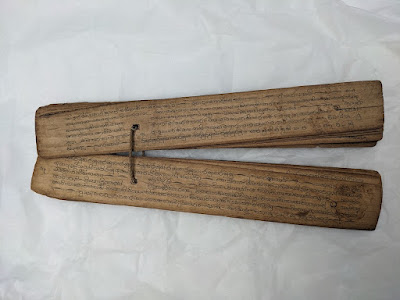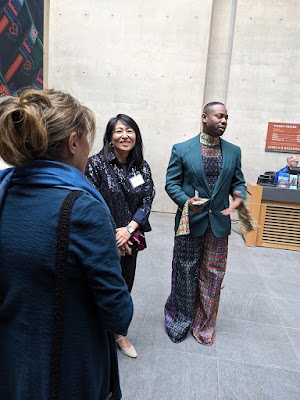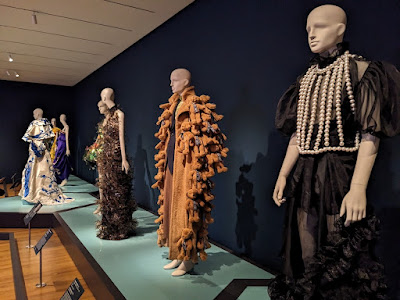I rushed back home after NY to take a fantastic Yoruba indigo class with Gasali Adeyemo. He is a star but so humble and generous. He did a ton of prep so that in a brief workshop (1 day + 2 hours the next day) we could experience his Nigerian tradition of indigo dyeing, which is SO different from the Japanese (which is what predominates most of what people know about indigo). The seeds, plants, process, and feel are related but different.
Of course I went in with batches of paper and bark. I did dye two little cotton pieces but that was halfhearted in comparison. The big goal was to see what I could do with my usual materials.
Tie dye has fun results but brutalized my hands. I tried going to a hand specialist afterwards but that was also too expensive (she doesn't take insurance). Velma was right that the more practical option is stretching before and after and being more mindful of what happens when you don't do something with your body and then suddenly do a ton of it really hard.
Here I am taking over half the drying rack for a completely full class. I spread out all over the place and became that lady in a workshop. I was afraid there would be a lot of people like that in the class because that is the nature of indigo, you simply want to dive into the vat, but it was actually a very healthy and sharing vibe with a whole mix of people I was happy to meet.
I also bundled a bunch of bark lace to throw into the vat and had a whole array of tones. The first day the vat that we started needed more time, so halfway through we switched to another vat that Gasali had prepared the day prior. I was so relieved to be the student and not have to figure out how to prep a class for a process that usually takes at least a week but is compressed. Once we went into that vat, WOW. It was rich and deep and immediate.
Here is a net I made from abaca fiber (banana leaf) that Velma had given to me a while ago.
Here it is drying after I put it in a vinegar soak. The cocoa ash used for the Yoruba indigo is SO strong, I was amazed by its alkalinity. I also used a lot of the abaca string to tie dye; afterwards I tried to net it and almost every strand in the ply failed. That's when I knew I HAD to do the vinegar baths because the caustic would eat all of my precious cellulose. My gampi hanji held up the best, true to its nature of having incredible wet strength.
These are bark grids that I was too scared to dye the first day but threw into the vat the second morning. There was definitely some disintegration but it managed to hold together.
After class ended, I didn't want to get off the indigo train so I went back to old cords that I had dyed in indigo years ago and practiced making a square dish, which I also had wanted to figure out how to make years ago. Turns out the technique it is exactly as I imagined.
One side
These are even worse, because all I want to do is hold them and stare at them, not actually figure out what the next step is. That's the challenge with both bark lace and indigo, so the combo is particularly hard.
Of course I got one of Gasali's shirts, he dyes onto the most beautiful brocade. I had a major application due and went into a panic, so I tried to rework an installation I had started (years?) ago and abandoned because there were too many other things tugging at me.
But now that I have bark thread dyed with indigo, I can start drawing. This is the most drawing-like feeling ever, even more so than when I draw traditionally.
But guess who draws even better? Nature, chance, fiber, when left to do its own thing. Wish I could keep drawing but need to skedaddle and prep for two hanji retreats.
Of course I got one of Gasali's shirts, he dyes onto the most beautiful brocade. I had a major application due and went into a panic, so I tried to rework an installation I had started (years?) ago and abandoned because there were too many other things tugging at me.
But now that I have bark thread dyed with indigo, I can start drawing. This is the most drawing-like feeling ever, even more so than when I draw traditionally.
But guess who draws even better? Nature, chance, fiber, when left to do its own thing. Wish I could keep drawing but need to skedaddle and prep for two hanji retreats.

